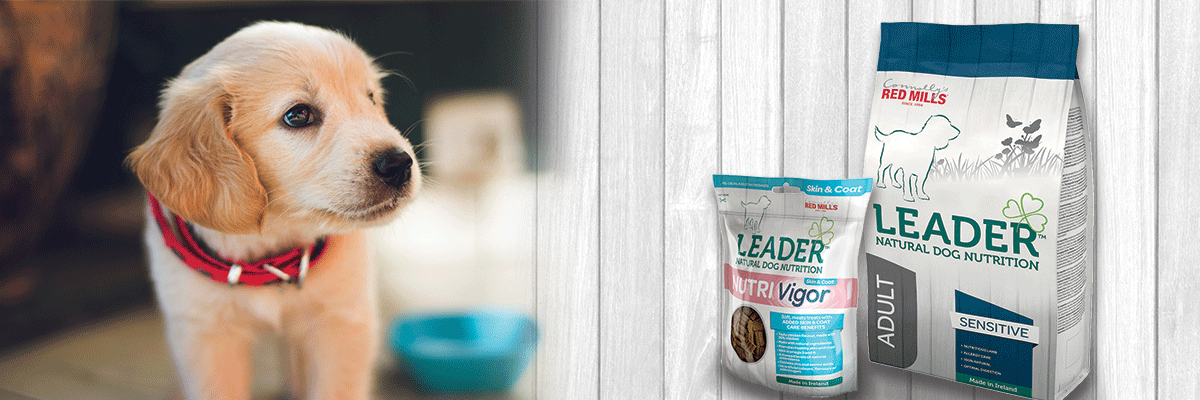When Your Dog Has Food Allergies
Share
[Sassy_Social_Share]When you are trying to figure out how to feed a dog with food allergies, it can feel overwhelming. Often, we only learn our dogs have food allergies after spending a lot of time trying to decipher increasing symptoms. A common scenario is that a dog has been eating the same food and doing well for years, then slowly develops symptoms. They might start shedding and scratching, so you step up the brushing and try a flea treatment. It seems to improve, but then it gets worse. Or your dog might have loose stools and you will try to figure out what they got into, thinking it is a once off thing. But then it happens again. And then you realize that even when they don’t have diarrhoea, they are not having normal, well-formed bowel movements.
Your first visit to the vet yields no clear answers. Your dog doesn’t have any specific illness. Parasite treatments do not help. Meanwhile, your best friend is feeling worse and worse. He might develop chronic ear or foot infections.
To add to the confusion, there is no quick and reliable test for dogs to detect food allergies. Many vets correctly claim food allergies in dogs are very rare. That statement, while accurate, ignores food intolerances and sensitivities that are not classed as ‘allergies’. Your dog will have the same symptoms and need the same treatment, so in practical terms, this is hair-splitting. So here we will refer to allergies, using it as an umbrella term for when a dog develops unpleasant symptoms as a result of eating a food that is healthy for most dogs.
How Can You Tell If Your Dog Has Food Allergies?
Once you and your vet have ruled out other causes of your dog’s symptoms – including seasonal and environmental allergies – the next step to diagnosing a food allergy in dogs is an elimination diet. For a period of at least six weeks, your dog should eat absolutely nothing but a very limited, simple diet. Your vet can guide you on this, and it won’t be the same for every dog. But it is critical that for this period, you stop all treats and table scraps and ensure that your dog does not snatch any snacks from the ground on walks, in the house or in the garden. It will take about six weeks for your dog’s body to be totally rid of the allergen and to recover significantly. You can continue the elimination diet for longer if your dog is improving slowly and you want to make sure he is completely well, provided the elimination diet food is well balanced and nutritious.

Some people make their dog’s elimination diet meals, while others use commercial foods. Whichever option you chose, the important thing is to make sure the elimination diet does not include the main ingredients of the dog’s regular food. So if the dog’s normal food is chicken-based, try lamb-based food for the elimination diet. If the regular food includes maize, make sure the elimination diet food does not include maize. The Go Native line of grain free dog foods can be a good choice. Go Native Organic Salmon with Spinach and Ginger and Go Native Free Run Duck with Apple and Cranberry are often excellent options for an elimination diet for a dog with food allergies.
If the dog improves during the elimination diet, that is a good indication that the problem is a food allergy. Now comes the hard part. To confirm the diagnosis, you need to reintroduce the allergen. If your dog was eating a food that included, for example, beef and maize, try to introduce those ingredients one at a time to see exactly which one is triggering your dog’s symptoms. Wait a couple of weeks before you introduce the next possible allergen. If you can isolate the specific food, that gives you more options for how to feed your dog with food allergies.
If he remains well as the other foods are introduced, he may have had seasonal allergies or another problem. It’s wise to watch him closely and wait a couple of weeks before drawing any conclusions.
How to Feed Your Dog with Food Allergies
Once you have confirmed that the root of the problem is a food allergy (or sensitivity or intolerance), it is time to think about how to feed a dog with food allergies long term. Foods that use a single protein source are optimal. Surprisingly, more dogs have sensitivities to proteins such as beef and chicken than to grains. Many dogs have sensitivities to more than one ingredient, so it is critical to read the label carefully. Avoid brands that don’t list individual ingredients clearly. ‘Meat by-products’ or ‘cereals’ could easily include your dog’s problem food.
It is important to find a good quality food that meets all of your dog’s needs. Large breeds particularly have specific dietary needs that not all foods meet. Their size means extra stress on their joints and their heart. Leader Sensitive offers wholesome lamb, rice and potato to be gentle on the stomach while providing premium nutrition with versions specifically formulated for small, medium or large breeds.

Feeding a dog with food allergies isn’t just about finding the ideal dog food. All dogs are good dogs, and they need treats too. But if your dog has allergies, it is important to be sure the treats you offer don’t include your dog’s allergens. Go Native treats come in four irresistible flavours – salmon, herring, turkey and duck – and are grain-free. They are the perfect reward for a dog who can’t have maize or wheat. If your dog can eat chicken, Leader Nutri Vigor Skin and Coat Care Treats are a great way to help build up their skin and coat after food allergies have done damage.
The bottom line when you are feeding a dog with food allergies is to stay in touch with your vet and to watch for any sign of symptoms returning. Your dog deserves to feel great, and the right diet is critical, especially for dogs with food allergies.





